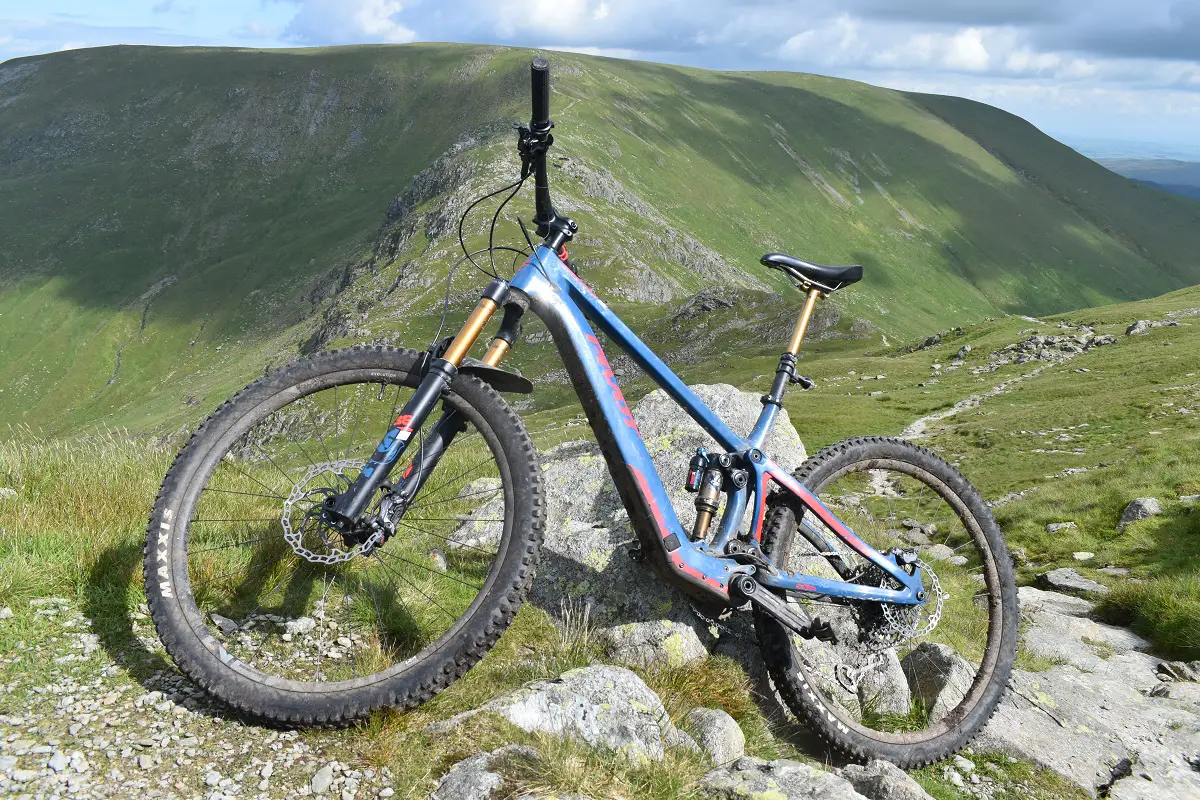In it for the long haul – A journey into e-bike ownership. Here’s Sanny’s latest instalment of a multi-part series of features detailing life with an electric mountain bike.
Read Living with an e-bike – Part One.
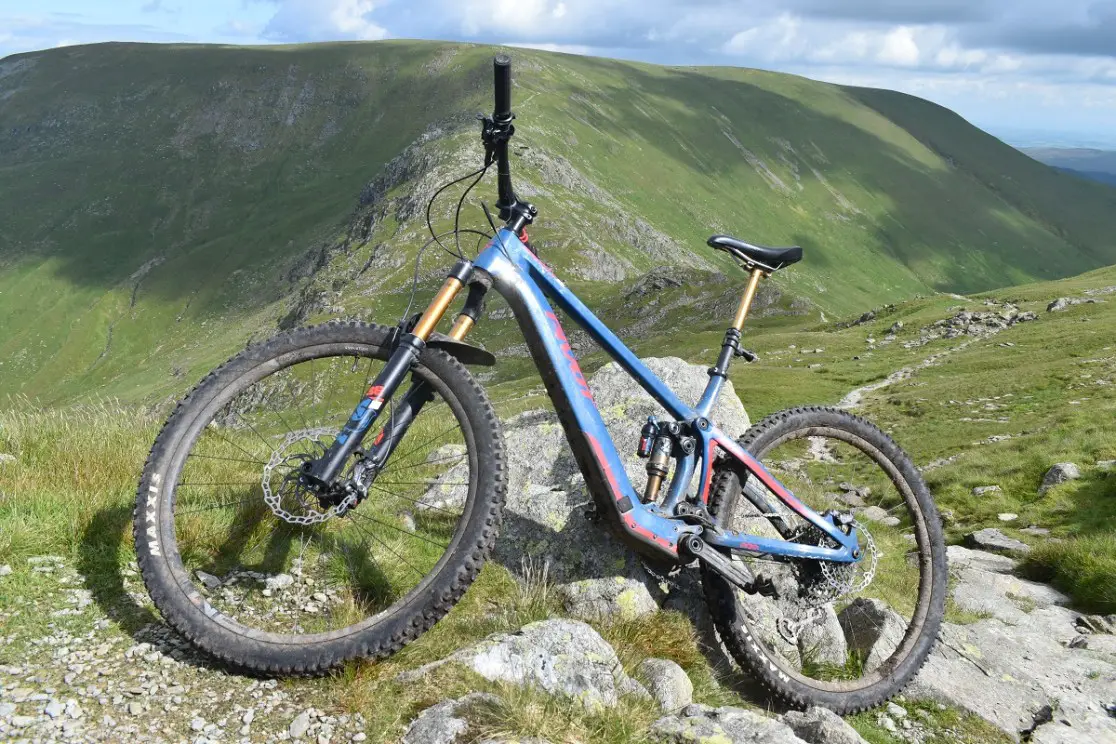
I have had several months to get used to riding an E Bike as my only bike. Has it been plain sailing or have it encountered stormy waters?
I am now several months into riding it and have subjected to some pretty big days out in sometimes challenging conditions so have a good evidence base to build my thoughts upon.
Latest Singletrack Merch
Buying and wearing our sustainable merch is another great way to support Singletrack
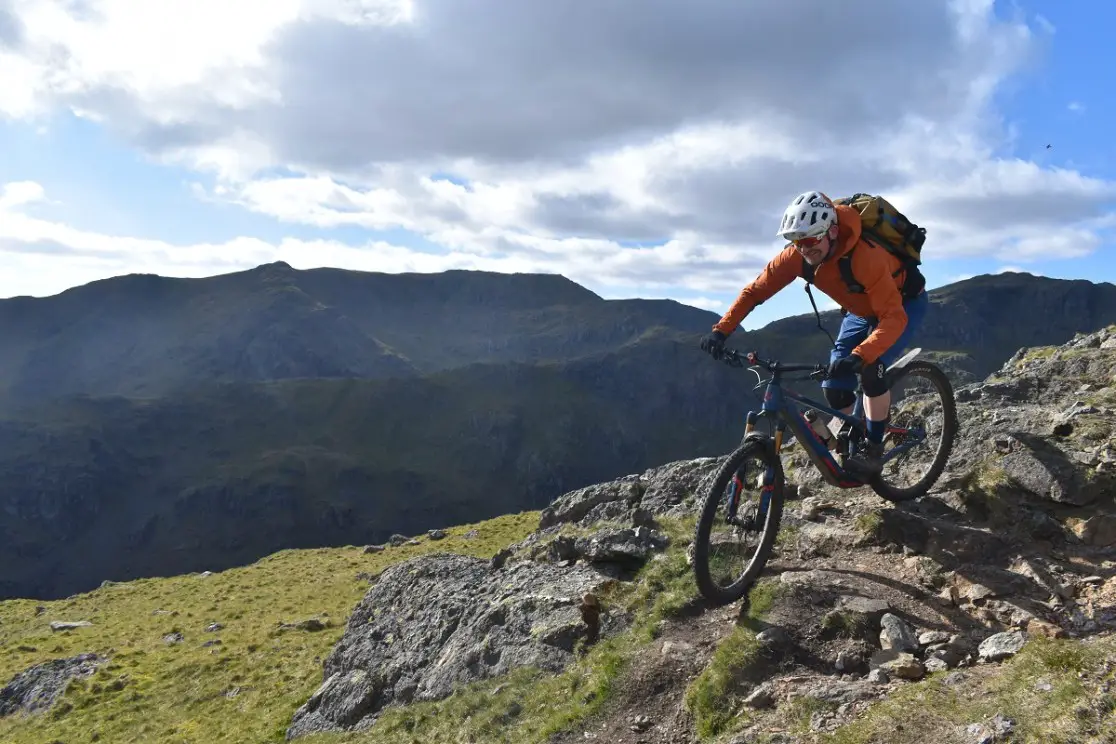
It’s all about the motor
At the heart of the Pivot is the Fazua Ride 60 motor system. The size – or lack thereof – is one of the big selling points of the motor. Boasting a maximum output of 60Nm of torque, it does not offer the torque figures of full fat e-bikes but that is not necessarily a bad thing. More on that later.
For those used to old school full fat e-bike motors, the Fazua is positively dinky in comparison. Looking at the side profile of the Pivot, you would be hard pushed to know that it is an e-bike. There is no bulbous motor casing protruding beneath the bottom bracket.
For me, this is a major selling point as I have had issues in the past with an e-bike where the casing was so low slung that it made contact with the edge of steps and rooty step downs when riding over and down them. Smacking a motor casing off large, immoveable objects is not well known for being good for motor lifespan.
Weighing a claimed 1.96kg, it is not exactly heavy. In order to maximise weight savings, Pivot have opted for the 2.3kg 430Wh battery pack to be integrated into the frame. All told, the system effectively adds 4.26kg to the weight of your bike compared to a non e-bike equivalent.
Being an integrated power pack, there is no option to take the battery out for charging. Charging takes place via a magnetised charging point located just forward and up of the front chainring. I suspect that this may divide some riders. Given the option, I would prefer to take the battery out for charging.
From a safety and practical perspective, I would prefer to store and charge a battery in a garage away from my house. Anyone who reads the news will be aware of the increased fire risks associated with charging e-bike batteries. The evidence base is that the vast majority of incidents relate to home brew e-bikes and generic chargers but even e-bikes from well established brands are not 100% risk free.
That is not to overstate the risks but simply recognises that for some owners, this is a consideration. As it is, I never charge the Pivot overnight and always disconnect it as soon as it is charged. In terms of charging, I have run the battery down to zero on a couple of occasions and it has fully recharged in approximately three and a half hours.
In terms of ride experience, the Fazua is the nicest e-bike motor I have ridden so far. Unlike some competitors, there is no pedal tremble when standing still before setting off. It was only after several stops at traffic lights that I realised what was missing.
Power delivery has a very natural feel to it. There are three settings to play with: Breeze, River and Rocket. On top of that, there is Boost mode which puts out a whopping 450 watts of power for four seconds from standstill (which makes for a fast getaway at traffic lights) and 12 seconds when riding. I very rarely used it but it is a fun to have option.
All settings come factory-set but by downloading the app, there is scope to play about with power settings, the amount of support delivered relative to the power being applied by the rider and the reaction speed of the motor in terms of speed of acceleration. I have yet to do this but intend to do so for Part 3 of this series.
Day to day, I have used the Eco setting almost exclusively. This is not just an excellent way of extending range but in my experience, even on steep climbs, I rarely feel the need to up the power output.
One of my early forays into the mountains was to ride with friends on full fat e-bikes up and down Carn Ban Mhor and Sgorr Gaoith in the Cairngorms. This is regarded as a bit of a classic ride in Scottish mountain biking. It was the first ever Munro I rode up and it is still a terrific day out.
Unsurprisingly, trying to keep up with friends on full fat e-bikes on higher power modes when you are sticking to Eco is no easy task so I didn’t bother trying. However, over the course of the best part of 3000 feet of sustained up, I didn’t feel at that great a disadvantage. While it took me a little longer to get up, the difference over the entire climb was only a matter of a few minutes.
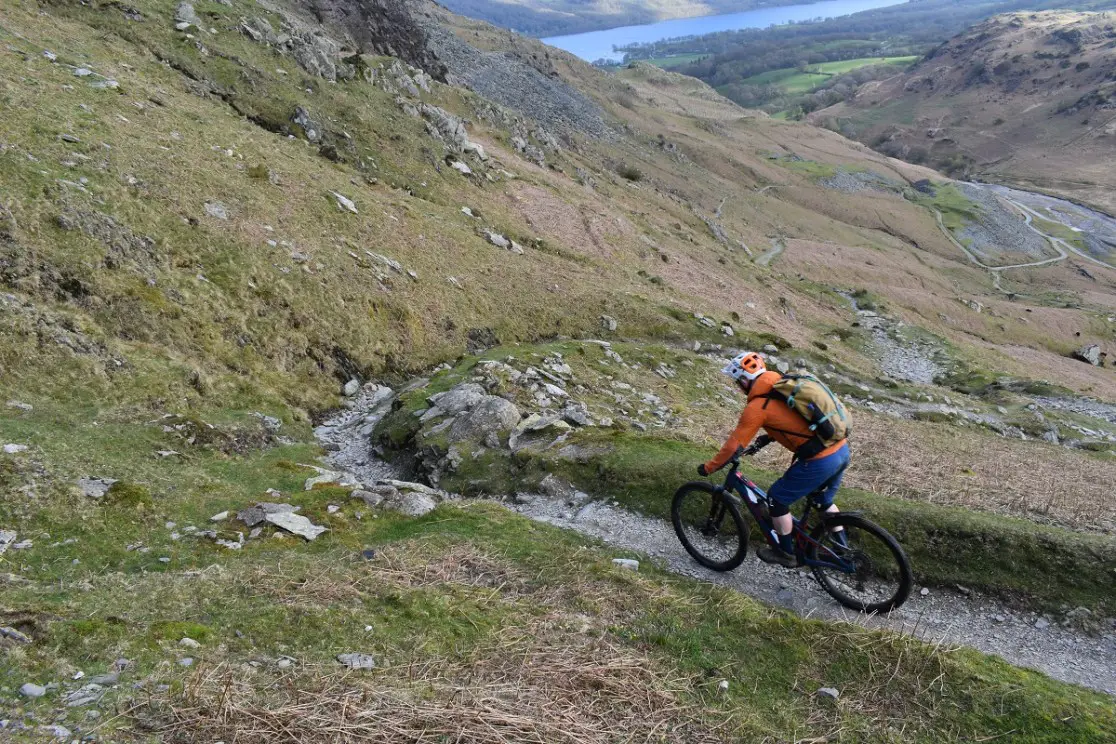
A motor that is genuinely quiet
On the flats and the downs, I had a big advantage in that I was able to do without any assist and spin along sans assistance without feeling like I was manhandling a tank. With myself for company on the ups, the low level of motor noise was most welcome. Figure in the inevitable ambient soundscape (skylarks really do have the most melodic song back catalogue at their disposal) and I barely noticed the motor noise as I spun up the hill track.
Being able to ride with the motor off was a major draw for me and one which I have exploited to great advantage. On slow speed, flat, downward loping or technical trails, the motor is not always needed. Once the trail steepens, it would be a lie to say that you don’t notice the extra weight in the bottom bracket area. The weight is most noticeable if you switch from riding with power to riding without as opposed to moving off from a standstill. However, I found that I quickly adjusted by running a lower gear and spinning like Tadej.
Being able to ride an e-bike as a regular bike with the motor off is something that drew me to the Pivot in the first place and on this, it does a fine job. Running with the motor off means that it can be used for big days out without encountering range anxiety.

Less range anxiety, more time riding
By the end of the ride when we arrived back at our starting point in Kingussie, I still had over 20% battery life in the tank. Given that we had covered well over 50 kilometres of mainly off road trails and climbed over 4000 feet, I reckon that was pretty good range.
On another ride heading from the door on road and off road along the West Highland Way with my good friend Dave on his carbon fibre race bike, again by switching off for some of the pan flat sections, I covered 27 kilometres and some 1000 feet of ascent using only 20 percent of my battery power before stopping for the obligatory bacon roll.
Another ride involved an extended explore of the fells behind Skiddaw. It was a windy day and a little wet at times with the tracks being mostly grassy or rough making for not particularly fast movement through the landscape. There were a couple of short sections of hike-a-bike but most of the ride was spent riding with the power on. Running out of juice only a few hundred metres from where I had started, I had managed approximately 1500 metres of ascent in 46 kilometres over a full day.
Fazua claim that you can get up to 140km of range or up to 1600 m of vertical in a ride depending on power settings. 140km would perhaps be achievable by riding along a canal in the Netherlands with a tailwind where the rider weights seven stone wet through if one was being a tad cynical. As with all e-bikes, range is dependent on a whole range of factors – power used, weight of the rider, amount of height climbed, how hard the terrain is etc. as my experience proves.

Simple but effective controls
Switching between power modes (not that I do it much) is a breeze. The Ring Drive controller feels a bit like it is made of cheap plastic but it has performed flawlessly so no complaints from this rider.
The level of power is displayed on a 5 led unit where the head tube meets the top tube. It is a simple affair which works well (there being colour modes to indicate which power mode you are in) but a possible future improvement might be to consider a proper percentage display.
I say this because I had to switch off the bike mid-charge then reconnect it. There is a delay of a few seconds between the charger pack turning red to indicate that charge is ongoing. I incorrectly assumed that the five bars on the top tube display meant it was fully charged when it was only just over 80% done. On the final grinder of a climb of the next ride, I ran out of juice which was a bit disappointing as I had a lovely headwind for company. Oh well, lesson learned.
In terms of operating range, I took the Pivot out on a hike-a-bike mission in temperatures well below zero in the Lake District in January. Driving through the Rydal valley, the car thermometer was reading -8°C so definitely on the chillier side of the scale – and out of Fazua’s -5°C recommended operating range.
Heading up on a mix of riding and hike-a-bike (the latter becoming the norm the higher I got as I made my way through at times thigh deep snow), the range was definitely reduced by the cold as I found myself burning through power faster than I was used to. This is to be expected with any e-bike but if you live in Scandinavia and like riding in the cold, it is something to be aware of.
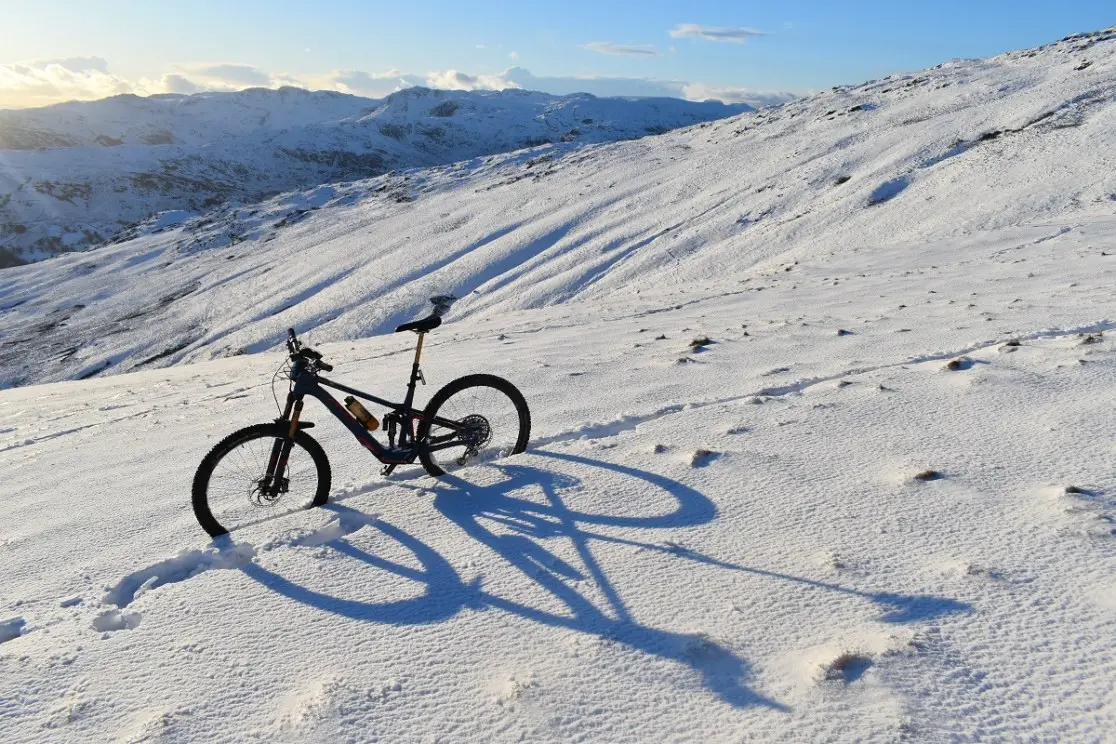
Enough already with the motor. What is it like to ride?
Short answer. Bloody brilliant. The long answer is a bit more nuanced.
I am a fan of DW suspension designs and the Pivot is a great example of one. I have never really been one for wallowy suspension. I like to feel connected to the trail and tend towards the less plush end of the spectrum. I don’t like the feeling of wasting energy as I am pedalling. As such, the Pivot is right up my strasse. It is entirely capable of taking a series of big hits such as riding down steep stone pitched trails in the Lakes without you feeling that you have been through the wringer. It responds well to putting down the power, both in and out of the saddle with a very satisfying sense of immediacy.
From the very off when I first jumped on the bike, I haven’t needed to make any adjustments to the suspension. I guess I was just lucky and the Pivot ticked all my boxes. On long climbs, the seating position is all day comfortable. Thankfully, Pivot have not adopted a relatively long, low and slack approach to their geometry. A friend jumped on and immediately commented how upright and high the bike felt to his XC eyes. This to my mind is a very good thing. Being comfortable on your bike is arguably the biggest determinant of whether you like riding it or not. If I am riding down steep trails, I do not crave the attack position. It acts to slow me down and is definitely a disadvantage when it comes to slow speed tech where the odd Euro hop can be employed to great effect. Raising the bars to their highest position, I have never felt any undue pressure on my hands nor pain in my back, neck and shoulders. The bike just fits. At the end of a big ride, the bike feels as good as when I first jumped on it.
On longer road sections, the ability to flick a lever on the rear shock and stiffen things up is a very useful little feature. There is sadly no corresponding lock out lever on the forks which I have to be honest and say that I have missed ever so slightly.
Climbing-wise, I tend to leave the rear shock wide open to soak up all the bumps and trail imperfections. It has got me up some stupidly steep climbs. There is a steep section on the way to Rigg Beck from Buttermere that looks and feels like a wall to ride up. However, the Pivot made short work of it. I was grinning like a buffoon when I crested that particular nippy little section.
Please sir, may I have a smaller ring?
As standard, my version of the Pivot comes with a 34 tooth chainring. While this is pretty much the norm for e-bikes these days, on steeper climbs I have found myself wishing for something a bit lower. I am a spinner rather than a grinder when it comes to long and steep climbs and find the 34 tooth ring is just a bit too high for my liking. I have a smaller chainring to fit but (as with most motors) Fazua have specified a lock ring that requires a tool unique to their design. Hopefully I will get my hands on said tool in time for the next article so I can report back.
In terms of overall ride feel, I found the Pivot to be perfectly balanced. It is easy to pop the front end up and over things while it can easily be made to go airborne off of small lips and little kickers. It has a playful quality to it that urges you to just have fun with it.
The lack of weight means that it does not display the ponderous, leaden quality of most full fat e-bikes I have ridden. It rides like a normal bike which to my mind is the highest compliment that I could pay it.
From a hike-a-bike perspective, I have happily taken the Pivot up some pretty large climbs. The squared off downtube is perfectly designed to sit flat on my Ortlieb Atrak ride pack and I have found myself hiking up steep terrain without having to keep a Kung Fu grip on the bike.
The paint is showing a small amount of minor wear but that goes with the territory. It is a heavier than a normal bike but not so much as to be a journey into a black hole of despair and misery.
The other bits
So far, there has been very little of note to write about in terms of issues and niggles. On an explore of the fells in the far western edge of the Lake District, I managed to shear a nipple (on the rear wheel, not on my person!) That is a first for me but then I have always avoided alloy nipples on all of my own wheels.
When I took the wheel to be repaired at my local wheelbuilder, Big Al, he suggested that I get the wheels completely rebuilt with brass nipples. Were it my own bike, I would tend to agree. They wheels have stayed round, are just the right size in terms of width, they do not feel unduly stiff unlike several carbon wheels I have tried and the bearings are still perfect with zero play.
The rear Shimano XT rear disc brake has needed a full rebleed. To be fair, over several rides, I could feel it getting progressively worse so at least I had plenty of notice to do something about it. Since their bleed, they have been spot on in their operation.
The rotor mount design is a curious one where the hub uses a lockring to secure six bolt pattern rotors. It is easy to tighten at home with a bottom bracket tool but less so on the trail. On three occasions, the lock ring has loosened off which is indicated by a tell-tale rattle of rotor on hub. Of course, these times were on the trail which meant I could not fully tighten the rotor before getting home. Much better would be either to adopt Shimano’s lock ring design or just spec a 6 bolt hub.
The Fox fork dropout arrangement is a curious one. There is no retaining lip for the axle on the non-rotor side to abut to. You are reliant on the lip on the axle acting as the stopper . While this may simplify production, I found it to be something of a pain in the bum hole. Every single time I have removed the wheel, the hub has slipped into the fork leg which has necessitated a judicious application of wiggling and cursing. Come on Fox, you can do better than this!
The Fox Transfer post has proven to be a bit sticky at returning so when the bike is next on the work stand, I will pop it out of the frame and have a look at it properly.
All of the above fall into the slightly annoying category but bolts loosen off and brakes end up needing bled no matter how much you spend on a bike and are a reminder to keep check your nuts regularly – so to speak.
Drivetrain-wise, the SRAM X01 set up has been flawless. E-bikes have a habit of chewing through drivetrains at a prodigious rate but the X01 set up continues to perform admirably without complaint. While I miss the double action of a Shimano trigger shifter, I have zero complaints about the performance and durability of X01 thus far. On a previous test e-bike, I was running a Shimano 12 speed XT drivetrain. During a substantially shorter test period, I wore out the drivetrain. The SRAM drivetrain has surpassed it for durability by a country mile. I have traditionally preferred Shimano but SRAM appear to have stolen their crown on this one.
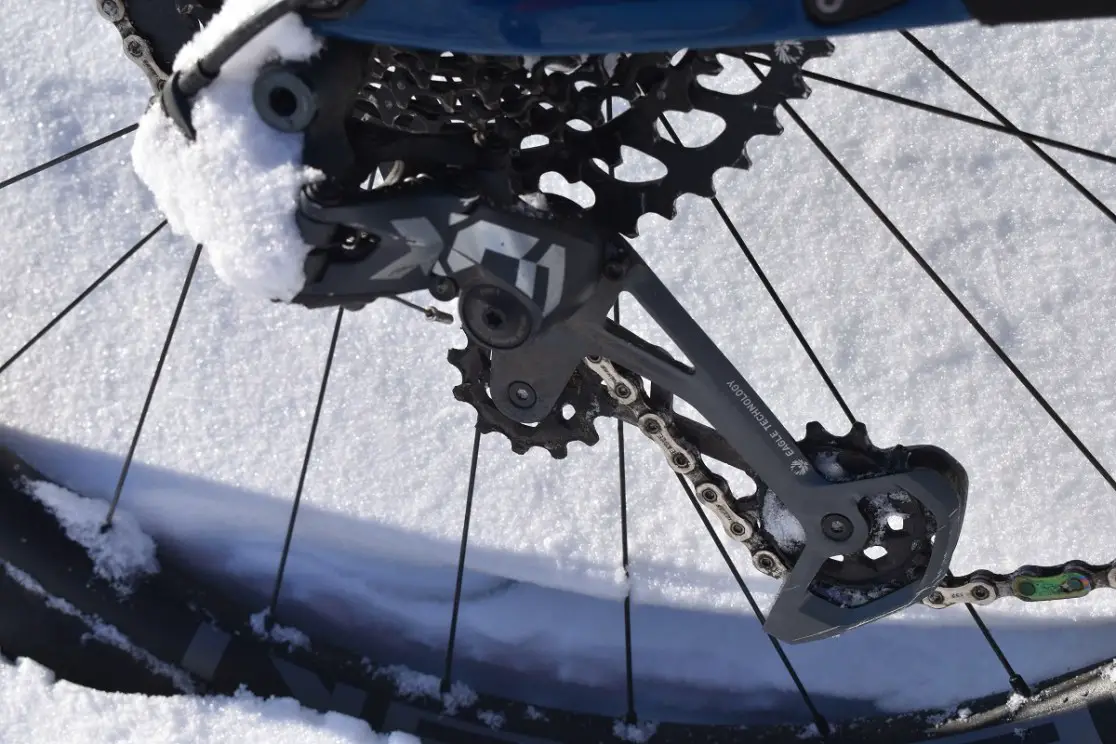
Verdict so far
So there you have it. So far, so good. I am enjoying riding the Pivot. I have to admit that I have occasionally strayed from it. I did notice a tailing off of my fitness. E-bikes can make you just that little bit lazy so I have countered that by endeavouring to ride faster and longer while adding in the odd normal bike ride to make sure my fitness is unaffected. From a hike-a-bike perspective, the extra few pounds are great for strength and conditioning!
Overall, I would give it an A for range, performance and handling and a B+ for the fork and hub design. The latter are inconveniences but given how good fork design and hub design is these days, they feel like a bit of a retrograde step. They don’t affect my enjoyment of the bike though.

